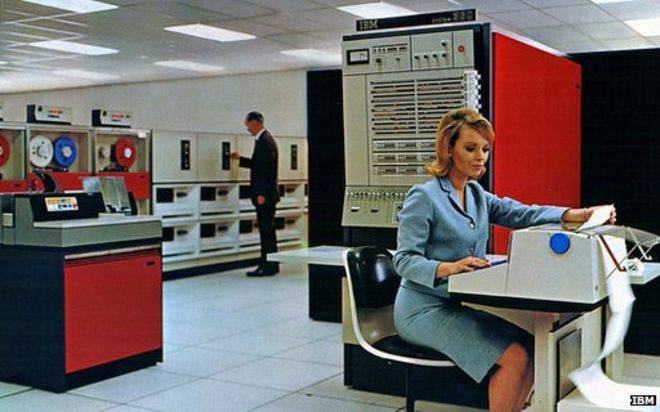
IBM mainframe celebrating its 50th anniversary
The IBM mainframe is celebrating its 50th anniversary.
The first System 360 mainframe was unveiled on 7 April 1964 and its arrival marked a break with all general purpose computers that came before.
The machines made it possible to upgrade the processors but still keep using the same code and peripherals from earlier models.
Later this year the British rival to IBM’s machine, the ICL 1900, also celebrates its 50th anniversary.
Despite their age, mainframes are still in wide use now, said Barry Heptonstall, a spokesman for IBM.
“I don’t think people realise how often during the day they interact with a mainframe,” he said.
Mr Heptonstall said mainframes were behind many of the big information systems that keep the modern world humming and handled such things as airline reservations, cash machine withdrawals and credit card payments.
The machines were very good at doing small-scale transactions, such as adding or taking figures away from bank balances, over and over again, he said.
‘Production house’
“We don’t see mainframes as legacy technology,” said Charlie Ewen, chief information officer at the Met Office, which has been using mainframes for 40 years.
“Mainframes have several characteristics that are enormously valuable for us,” he said. They are “resilient, robust and are very cost-effective for some of the work we do”, he added.
The Met Office uses its machines to slice its data sets in many different ways for different clients and keeps them running all day every day, said Mr Ewen.
“The mainframes are the production house of our IT operation and help us provide four million forecasts a day,” he said.
Mr Heptonstall said the introduction of System 360 also changed the way computers were used.
ICL’s range of machines was created to compete with IBM’s System 360
“Before System 360 arrived, businesses bought a computer, wrote programs for it and then when it got too old or slow they threw it away and started again from scratch,” he said.
Kevin Murrell, co-founder of the National Museum of Computing, said the name IBM adopted for its range of machines dated from an earlier, non-computer, era.
Scientific equipment such as oscilloscopes were often built around a “main frame” on which customers could choose to put extras or add-ons specific to their research needs.
In addition, he said, in the post office the “main frame” was the part of a telephone exchange where all the incoming wires were located.
“It was quite a common name,” he said.
Keyboard legacy
In the early days of computers, the size of a mainframe made it easy to distinguish it from other types of computer.
“If it was big enough to walk around then it was a mainframe,” he said. “If you could get it in your living room it was a mini-computer, and if you could carry it then it was a micro.”
Soon after the appearance of the System 360 family, ICL produced its own rival line of mainframes that started with the 1900. A series of events is being planned to celebrate the arrival of that machine and its successors, said Mr Murrell.
The machines have a legacy seen on many modern keyboards, he said. The “escape” key was a common way to exit from a menu system on a mainframe and the “SysRq” key on some keyboards also dates from that era of monolithic computing.
“If you were using a terminal-based system, ‘System Request’ let you interrupt what you were doing and run another job,” he said. “But I’m not sure it’s ever had a use in Windows.”